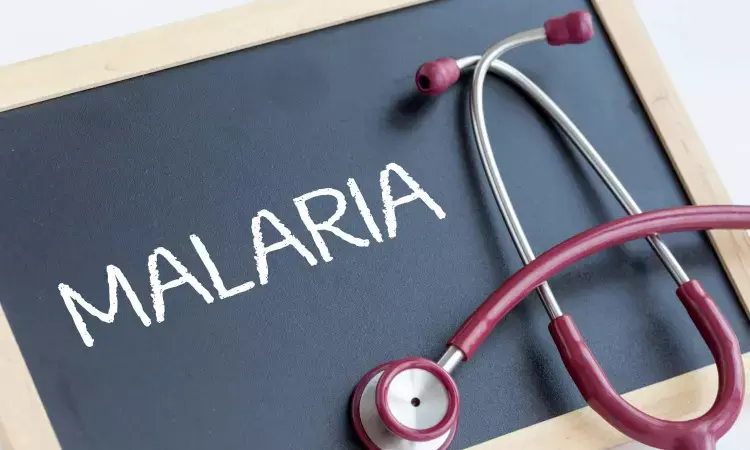- Home
- Medical news & Guidelines
- Anesthesiology
- Cardiology and CTVS
- Critical Care
- Dentistry
- Dermatology
- Diabetes and Endocrinology
- ENT
- Gastroenterology
- Medicine
- Nephrology
- Neurology
- Obstretics-Gynaecology
- Oncology
- Ophthalmology
- Orthopaedics
- Pediatrics-Neonatology
- Psychiatry
- Pulmonology
- Radiology
- Surgery
- Urology
- Laboratory Medicine
- Diet
- Nursing
- Paramedical
- Physiotherapy
- Health news
- Fact Check
- Bone Health Fact Check
- Brain Health Fact Check
- Cancer Related Fact Check
- Child Care Fact Check
- Dental and oral health fact check
- Diabetes and metabolic health fact check
- Diet and Nutrition Fact Check
- Eye and ENT Care Fact Check
- Fitness fact check
- Gut health fact check
- Heart health fact check
- Kidney health fact check
- Medical education fact check
- Men's health fact check
- Respiratory fact check
- Skin and hair care fact check
- Vaccine and Immunization fact check
- Women's health fact check
- AYUSH
- State News
- Andaman and Nicobar Islands
- Andhra Pradesh
- Arunachal Pradesh
- Assam
- Bihar
- Chandigarh
- Chattisgarh
- Dadra and Nagar Haveli
- Daman and Diu
- Delhi
- Goa
- Gujarat
- Haryana
- Himachal Pradesh
- Jammu & Kashmir
- Jharkhand
- Karnataka
- Kerala
- Ladakh
- Lakshadweep
- Madhya Pradesh
- Maharashtra
- Manipur
- Meghalaya
- Mizoram
- Nagaland
- Odisha
- Puducherry
- Punjab
- Rajasthan
- Sikkim
- Tamil Nadu
- Telangana
- Tripura
- Uttar Pradesh
- Uttrakhand
- West Bengal
- Medical Education
- Industry
India topped Southeast Asia Region in malaria cases, deaths in in 2022, shows WHO report

Geneva: India topped countries in the South-East Asia Region for the most number of malaria cases and deaths in 2022, according to the 2023 World malaria report published by the World Health Organization (WHO) on Thursday.
The report showed that in 2022, nine countries in the South-East Asia Region contributed to about 2 per cent of the burden of malaria globally (5.2 million cases).
Most malaria cases in the Region were concentrated in India (66 per cent) and about 94 per cent of deaths were in India and Indonesia.
Also Read:Haryana reports fall in malaria cases by 93 percent, no case of chikungunya till now
Globally, there were estimated 249 million malaria cases in 2022, exceeding the pre-pandemic level of 233 million in 2019 by 16 million cases.
There were also an additional five million malaria cases in 2022 over the previous year and five countries bore the brunt of these increases, the report said. Pakistan saw the largest increase, with about 2.6 million cases in 2022 compared to 500,000 in 2021. Significant increases were also observed in Ethiopia, Nigeria, Papua New Guinea and Uganda.
Meanwhile, in the 11 countries that carry the highest burden of malaria, rates of new infections and deaths have levelled off following an initial upsurge during the first year of the pandemic.
These countries, supported through the WHO “High burden to high impact” approach, saw an estimated 167 million malaria cases and 426,000 deaths in 2022.
The report emphasised on the growing threat of climate change in increasing malaria cases. It showed that changes in temperature, humidity and rainfall can influence the behaviour and survival of the malaria-carrying Anopheles mosquito. Extreme weather events, such as heatwaves and flooding, can also directly impact transmission and disease burden.
Catastrophic flooding in Pakistan in 2022, for example, led to a five-fold increase in malaria cases in the country.
“The changing climate poses a substantial risk to progress against malaria, particularly in vulnerable regions. Sustainable and resilient malaria responses are needed now more than ever, coupled with urgent actions to slow the pace of global warming and reduce its effects,” said Dr Tedros Adhanom Ghebreyesus, WHO Director-General, in a statement.
Climate variability is expected to have indirect effects on malaria trends through, for example, reduced access to essential malaria services and disruptions to the supply chain of insecticide-treated nets, medicines and vaccines. Population displacement due to climate-induced factors may also lead to increased malaria as individuals without immunity migrate to endemic areas.
There has also been progress toward malaria elimination in many countries with a low burden of the disease. In 2022, 34 countries reported fewer than 1000 cases of malaria compared to just 13 countries in 2000. This year alone, three more countries were certified by WHO as malaria-free -- Azerbaijan, Belize and Tajikistan -- and several others are on track to eliminate the disease in the coming year.
The report also cites achievements such as the phased roll-out of the first WHO-recommended malaria vaccine, RTS,S/AS01, in three African countries. In October 2023, WHO recommended a second safe and effective malaria vaccine, R21/Matrix-M. The availability of two malaria vaccines is expected to increase supply and make broad-scale deployment across Africa possible.
Kajal Rajput joined Medical Dialogues as an Correspondent for the Latest Health News Section in 2019. She holds a Bachelor's degree in Arts from University of Delhi. She manly covers all the updates in health news, hospitals, doctors news, government policies and Health Ministry. She can be contacted at editorial@medicaldialogues.in Contact no. 011-43720751


